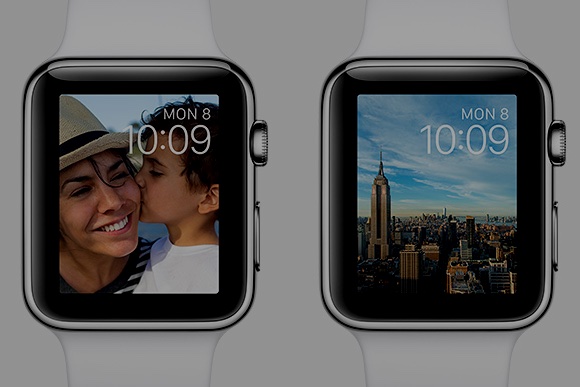
Implications Of Third-Party Complications And "Custom" Faces
One of the ongoing debates among Apple Watch aficionados, pundits, critics, and the otherwise just plain curious has centered on the device’s lack of third-party Faces at launch. Many reviewers generally hot on the device are cold on this pointlessly restrictive exclusion, saying it sours the overall experience just a bit. I am, without reservation, a founding (and vocal) member of that class. Right now, the lack of a Faces store for Apple Watch represents my single most profound disappointment in the inaugural device.
Naturally, if you read my past work here, you’re probably well-versed in my assertions that third-party Faces are a foregone conclusion for some point down the near- to mid-term road. And while yesterday’s unveiling of watchOS 2 at WWDC 2015 didn’t take the wraps off of any such feature, Apple did ease restrictions — somewhat sooner than I’d expected — on a pair of closely related issues: Developers will be allowed to utilize their own app-specific Complications, and customers will be able to utilize what amounts to an eleventh stock Face, which pulls images from their own Camera Rolls.
This is good news in and of itself, but it’s even better news for users like me, because it obliterates wholesale the notion that Apple wants to keep Faces locked down to maintain a concerted Apple-design-centric presentation for the wearable’s timekeeping “home screen.” Rabid Apple apologists have long argued that preventing users from personalizing the (arguably and in my opinion) most personal aspect of Apple’s “most personal device ever” is somehow in everyone’s best interest. These people dismiss third-party Faces as trivialities beneath the computing giant’s high-brow sensibilities, and truly, the only possible argument in favor of this silly strategy is exactly such a philosophical one. From a business perspective, as Pebble’s appstore and Android Wear’s storefront both clearly demonstrate, allowing a rich third-party Faces environment can only be a positive financial draw. More than that, to use the current early-adopter/new-platform buzzword, it considerably ups the “delight” ante for the end user.
But, as I said, that argument — pathetically tenuous as it already was — has been torn asunder by Cupertino’s recent announcements, because nothing (nothing!) could possibly ruin Apple’s carefully-controlled Faces look more than allowing third parties to go in and modify certain aspects of them. Granted this will probably be a highly curated process (just like a Faces Store would be and the Watch App Store should be), Apple can no longer claim exclusivity over the appearance of Apple Watch’s most visible aspect. Couple this with letting users paste any old bezel-highlighting drunk selfie or epic turd from their iPhone onto that same home screen, and there’s simply no way to believe that Apple’s really interested in further controlling this particular narrative.
There are a few technicalities to consider with the hold-up re: a dedicated Faces Store, however, and these likely constitute the brunt of the more rational rationale that has us waiting for the new feature.
The chief consideration I generally come across is legal in nature, as there are sure to be a slew of counterfeit Folex-style offerings aping the look and luster of iconic watch faces. Naturally, this would readily be dealt with on Apple’s end. I don’t see a whole lot of fake Walmart and Amazon and eBay apps out there, and the removal process for the few Faces that might slip by Apple’s approvals team would be largely the same as existing solutions for infringing apps. Furthermore, it might be in high-end Swiss makers’ best interests to use such a Faces Store to promote versions of their own trademarks. I wrote about this before, and I believe it remains completely sound. I’d pay good money for an official Rolex Submariner or Omega Speedmaster Face, and I suspect that the well-to-do Edition clientele among us would fork over hundreds of dollars (if not thousands) for beautiful translations of VC, AP, PP, etc. dials. Luxury outfits could even make brand new designs just for Apple Watch and charge a mint. It would be a mutually beneficial arrangement for all parties. Plus, budding app makers may have their own ideas for neat, easy-to-code Faces that might not only help get their names out there, but provide them with a simplified, primer-like take on learning what could otherwise be a pretty daunting Apple Watch SDK. This enriches the entire development community.
The second potential snag — and the first one suggested when Apple Watch was still building up to launch, is that Apple’s stock Faces are battery optimized in a way that third-party Faces (for some reason) wouldn’t be. However, between Apple’s battery-friendly design guidelines, the device’s overall excellent battery life in the wild, and the fact that this line of reasoning is kind of nonsensical in the first place, the position is a total non-issue.
The third issue is the most technical in nature, and it’s probably the closest one to being true: At launch, developers weren’t able to code apps that run completely on Apple Watch itself, untethered from iPhone. Faces wouldn’t be able to run smoothly or efficiently if so piggy-backed, thus Apple simply disallowed them as a matter of necessity. Now, though, that necessity has evaporated, and the argument no longer applies. There are literally no more valid reasons for Apple to exclude third-party Faces from the ever-more-robust Apple Watch equation.
So if that’s the case, why weren’t third-party Faces announced yesterday?
Simple: Because they are going to be a huge selling point for watchOS 3.